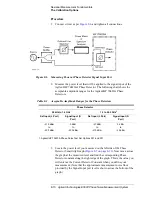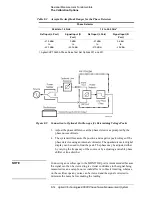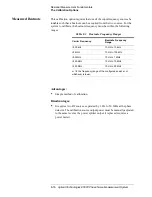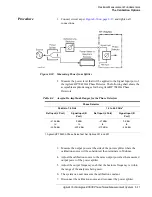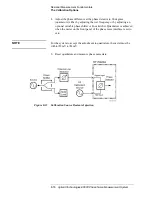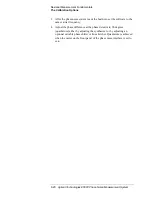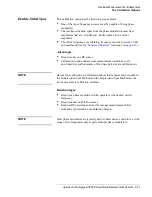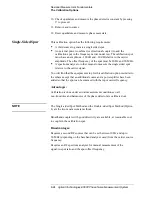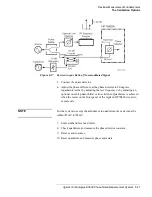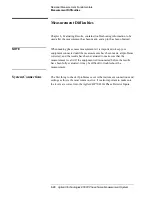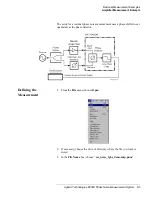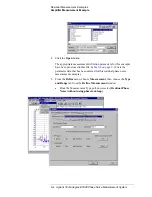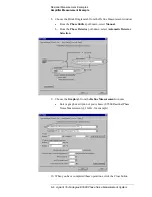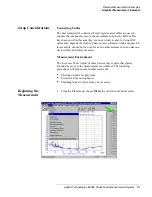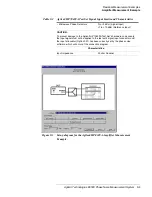
8-24
Agilent Technologies E5500 Phase Noise Measurement System
Residual Measurement Fundamentals
The Calibration Options
10. Check quadrature and measure the phase detector constant by pressing
Y to proceed.
11. Remove audio source.
12. Reset quadrature and measure phase noise data.
Single-Sided Spur
This calibration option has the following requirements:
•
A third source to generate a single sided spur.
•
An external power combiner (or directional coupler) to add the
calibration spur to the frequency carrier under test. The calibration spur
must have an amplitude –100 dB and –20 dB relative to the carrier
amplitude. The offset frequency of the spur must be 20 Hz and 20 MHz.
•
A spectrum analyzer or other means to measure the single sided spur
relative to the carrier signal.
You will find that the equipment setup for this calibration option is similar to
the others except that an additional source and a power splitter have been
added so that the spur can be summed with the input carrier frequency.
Advantages:
Calibration is done under actual measurement conditions so all
non-linearities and harmonics of the phase detector are calibrated out.
NOTE
The Single-sided Spur Method and the Double-sided Spur Method (Option
4) are the two most accurate methods.
Broadband couplers with good directivity are available, at reasonable cost,
to couple in the calibration spur.
Disadvantages:
Requires a second RF sources that can be set between 10 Hz and up to
50 MHz (depending on the baseband analyzer used) from the carrier source
frequency.
Requires an RF spectrum analyzer for manual measurement of the
signal-to-spur ratio and the spur offset frequency.

